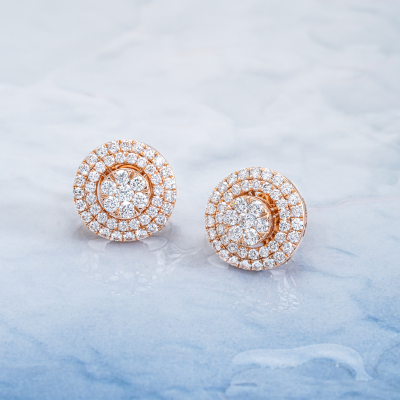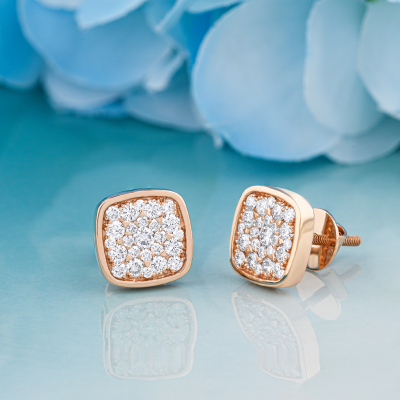A Comprehensive Guide to Different Colors of Diamonds
Do Diamonds come in colors? Many of us are under the impression that diamonds are clear and colorless jewels. In fact, it is actually rare to find a diamond that is completely colorless and has no tint of color at all. And so, they can be found in just about any color that is found within nature.
Before going jewelry shopping, it is crucial to understand 4C's, particularly color. Most diamonds have small trails of color within their crystal structures. Although it may not gather much attention, the colors of diamond impact its price and value of a diamond. Moreover, it is essential to know that color is often hard to detect with the naked eye and without gemological training.
Different colors of diamond impact more than just the look of your dream Diamond Engagement Rings or any other jewelry. This blog covers everything you need to know about the diamond color chart, how it may affect your budget, and how it can influence your choice.
Understanding the Standard Scale Different Colors of Diamonds
Have you ever wondered what is the color of diamond? Let us answer this for you.
The GIA i.e., Gemological Institute of America, is a standard grading system that assesses the color of a diamond. GIA issued a diamond color grading scale ranging from D to Z, with D being colorless and Z being light yellowish.
The letter scale is segregated into five sub-categories colorless (D-F), near colorless (G-J), faint (K-M), very light (N-R), and light (S-Z). Color-scale diamonds above Z are called fancy colored diamonds, which are rare to find in nature and are highly expensive.
The absence of color evaluates its grade and value and significantly impacts its physical appearance. Let’s briefly discover each of the GIA-created sub-categories to understand better.
Colorless Grades (D, E, F)
One of the most valuable diamond colors is D. These are the highest quality color grades a diamond can receive. Among the colorless grades, the D-color diamond is the rarest color diamond and emits unparallel brilliance. Although the difference between each grade is only something, a trained professional will be able to portray with the use of special equipment.
This category contains a very minute trace of color that is impossible to notice with the naked eye.
Near Colorless Grades (G, H, I, J)
Diamonds with a color grade ranging from G to J are considered near colorless. These grades contain noticeable color only when they are compared to higher grades but, in most cases, will appear colorless when viewed individually.
Diamonds in this category offer the best value as they are more cost-effective than colorless diamonds. They typically appear colorless to the regular naked eye yet contain slightly detectable color.
Faint Grades (K, L, M)
Diamond color grade ranging from K to M is considered to have a faint color. With these diamonds, it is easier to notice a tint of yellow shade with a naked eye. Even with noticeable color, these grades of diamonds can emit fire and excellence.
Depending on personal choices, this category may be a clear no compared to higher grades in terms of beauty. Moreover, this Types Of Diamond can best fit with a setting in yellow gold or rose gold, as the color of a diamond will not be as apparent.
Very Light Grades (N, O, P, Q, R)
The diamond color grade ranging from N to R belongs to a very light shade. With these diamonds, it is easier to see coloration in larger stones with an untrained eye.
Light Grades (S, T, U, V, W, X, Y, Z)
These diamonds impart coloration, and they can be seen in many-sized stones. Diamonds with a color ranging from S to Z are considered a light color. Despite having a yellowish shade or brown hue, they are not so colored as to be considered fancy diamonds.
Fancy Colored Diamonds
Diamonds that exhibit a color other than light yellow or brown, as well as diamonds exhibiting color beyond the Z range and having the coloration of any other color are considered to be fancy colored diamonds.
Fancy-colored diamonds can come in almost any color range (different colors of diamonds) that you can think of. They are the rarest color diamond and are even more valuable than their white counterparts.
The process of choosing the perfect diamond can be overwhelming when you are just getting started. However, we have compiled these different colors of diamonds scale to inspire you to see the beauty of every color. Additionally, finding new ways to set a diamond in a way that sets you apart from the rest is always fun. This Definitive Guide To Diamond will definitely help you explore the wide range of hues and tints to make the best decisions while on a diamond shopping to get the best bling possible for your budget.










